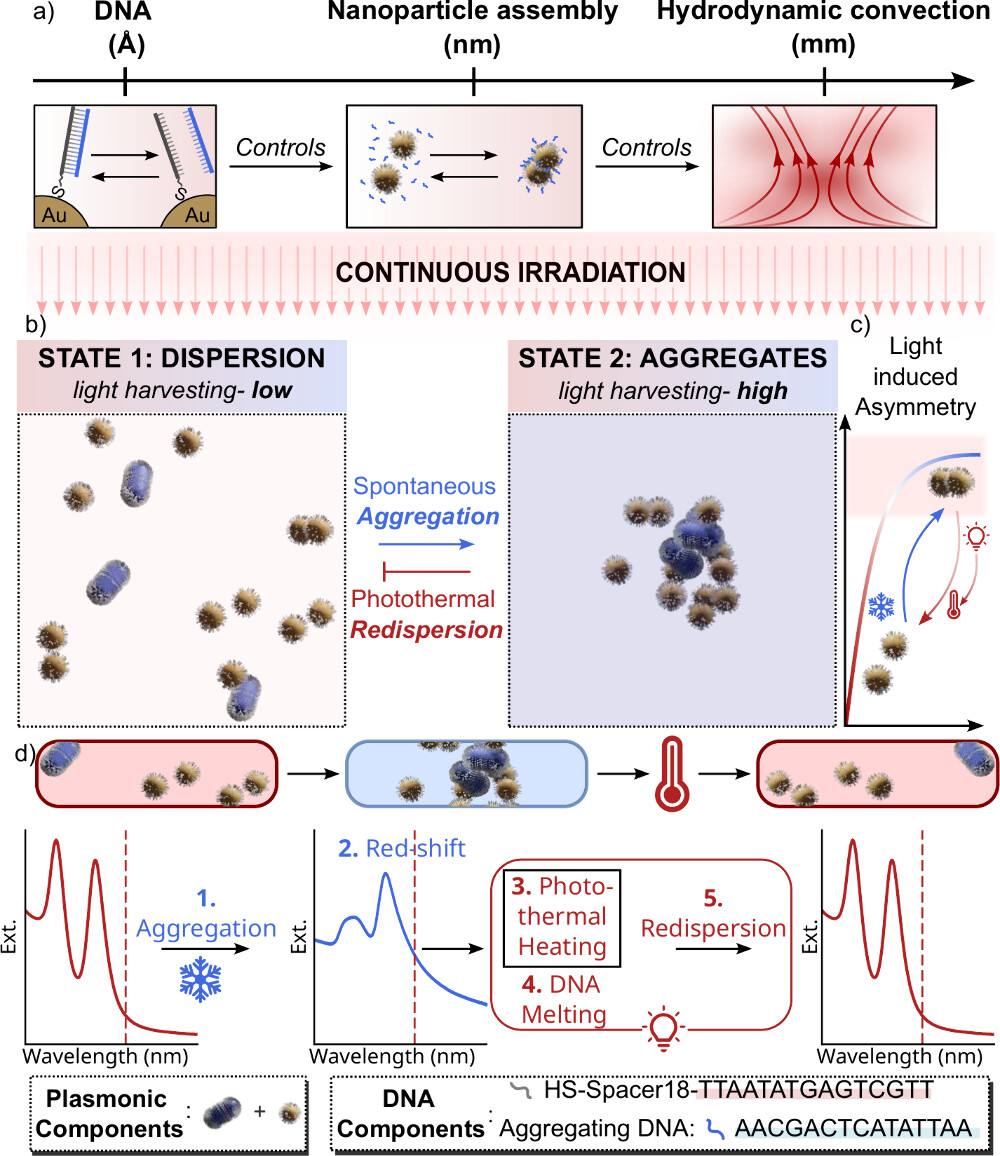Oscillatory hydrodynamics in DNA-coated gold nanoparticles
Periodic responses to nonperiodic energy inputs, such as oscillations, are hallmarks of living systems. Researchers have devoted considerable efforts to understanding and mimicking natural self-assembled structures and functions to systems composed of nonbiological components. This has rendered remarkable developments in regulating interparticle interactions to form static and dynamic self-assemblies. Dynamic assemblies can, under suitable stimuli, exhibit switchable, transient, or oscillating behaviours. Particularly attractive are systems demonstrating periodic responses under nonperiodic energy supply, i.e., self-oscillations since they have been envisaged to outperform their steady-state counterparts, especially for catalytic applications. Despite recent advancements, designing functional and modular self-oscillators presents a formidable challenge.
Traditionally, chemical oscillations were achieved using organic and inorganic reagents in continuous stirred tank reactors and flows or enzymatic networks. The key design components involve positive and negative feedback loops separated by a time delay.
Although the above-mentioned oscillations have been exploited to induce similar patterns in colloids, polymers, or gels, the macroscopic manifestation of oscillatory patterns, detectable by the naked eye, seems to be reserved only for molecular systems.

Now, a team of researchers has tested a daring hypothesis 1: that a hierarchical design of nanoparticle-based systems, where thermoresponsive surface ligands regulate the reversible clustering of nanoparticles under uninterrupted light, can eventually generate strong thermal convection forces that eventually result in hydrodynamic oscillations.
The researchers selected DNA-triggered spontaneous and nonspecific aggregation of gold nanoparticles as positive feedback and heat-induced redispersion as negative feedback. In such a nanosystem, there is a hierarchical response to light, where thermoplasmonic effects and reversible DNA-hybridization generate thermal convective forces and ultimately, oscillatory hydrodynamic flows.
The slow aggregation of gold nanoparticles versus the fast photothermal disassembly create asymmetric feedback loops, which, combined with thermal hysteresis for time-delay, are essential ingredients for orchestrating an oscillating response.
Author: César Tomé López is a science writer and the editor of Mapping Ignorance
Disclaimer: Parts of this article may have been copied verbatim or almost verbatim from the referenced research paper/s.
References
- Anish Rao, Ana Sánchez Iglesias, and Marek Grzelczak (2024) Choreographing Oscillatory Hydrodynamics with DNA-Coated Gold Nanoparticles Journal of the American Chemical Society doi: 10.1021/jacs.4c06868 ↩